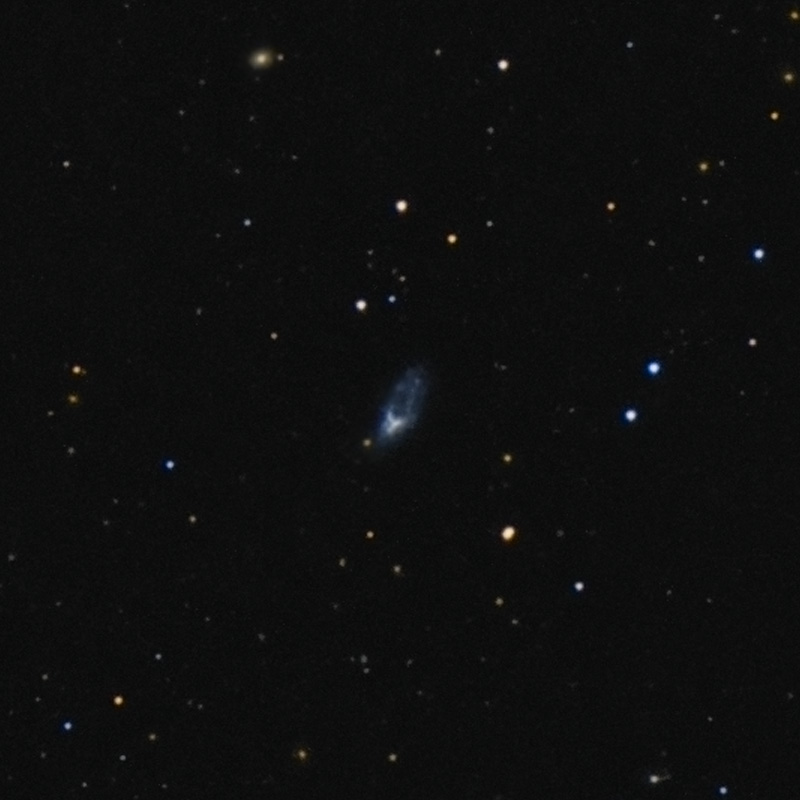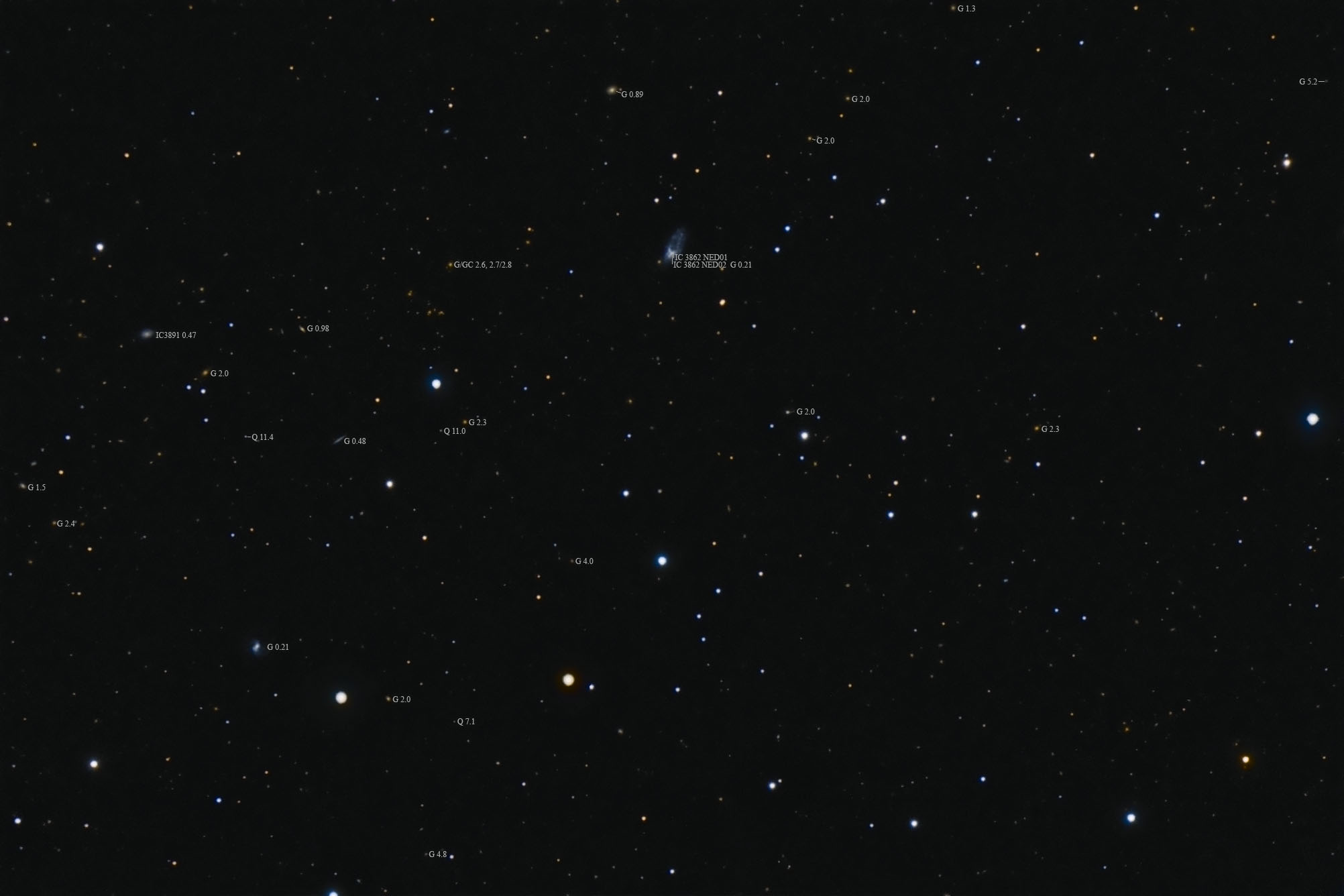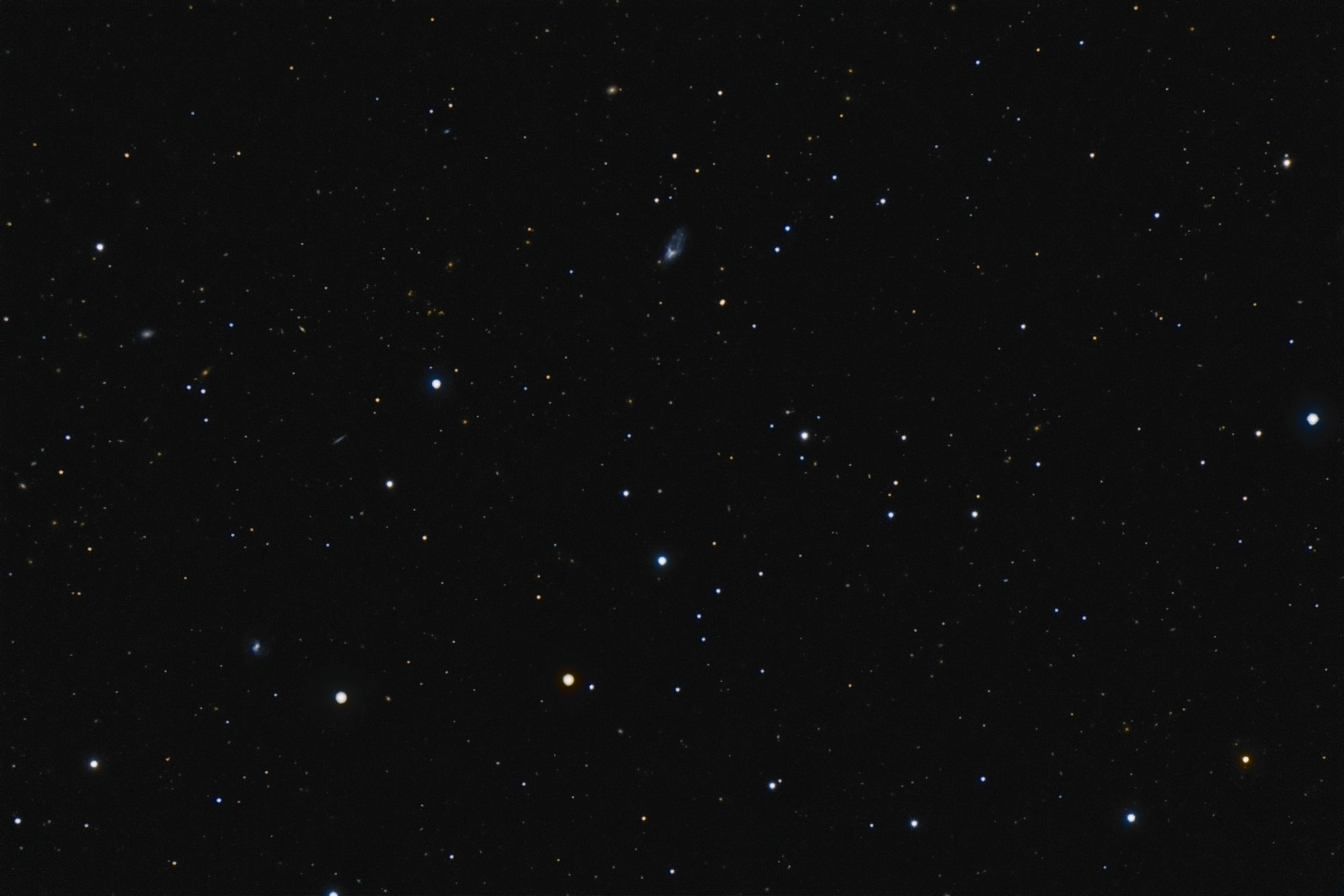| Description | Images |
Object name: ARP265Designation(s): ARP265, IC3862, IC3891, Arp 265/IC 3862 is a very odd object in Canes Venatici located about 210 million light-years away. Arp put it in his class galaxies with irregular clumps. Though a note at NED incorrectly says "galaxies with adjacent loops." It is also known as IC 3862 which NED then splits into two galaxies only 2" of arc apart! One is centered on the brightest part of the galaxy and the other two seconds west where little is to be found. The error circle for the location of the western galaxy is 1.25" while that of the eastern is 0.5" so they could nearly overlap and be the same object. One note at NED also says "Possibly consists of two bodies." It certainly has the look of a possible merger in progress. Arp's only comment on it is "Resolution of stars or knots." Southeast of Arp 265 about 14.3 minutes is KUG 1252+361. This is a distorted spiral at the same distance as Arp 265. A note at NED suggests it has a double nucleus. I doubt that but it certainly is distorted. It was discovered by Max Wolf on March 21, 1903. Related Designation(s):2MASS J12545821+3603100, 2MASX J12545821+3603103, 2MASXi J1254582+360311, ARP 265, ARP265, ASK 518943.0, GALEXASC J125458.33+360309.9 , IC 3862, IC 3891, IC3862, IC3891, KIG 0558:[VOV2007] 019, KIG 0558:[VOV2007] 022, KUG 1251+363, LEDA 2074181, MAPS-NGP O_268_0770662, MAPS-NGP O_268_0772681, MCG +06-28-039, NGP9 F268-0774744, NGP9 F268-0776763, NSA 090631, PGC 043844, SDSS J125458.24+360309.7, SDSS J125458.25+360309.7, SDSS J125458.25+360309.8, UGC 08023, VV 266, [TTL2012] 546756, | Permanent link: https://images.mantrapskies.com/catalog/ARP-GALAXIES/ARP265-IC3862-IC3891/ARP265L4X10RGB2X10X3-CROP150.JPG |


